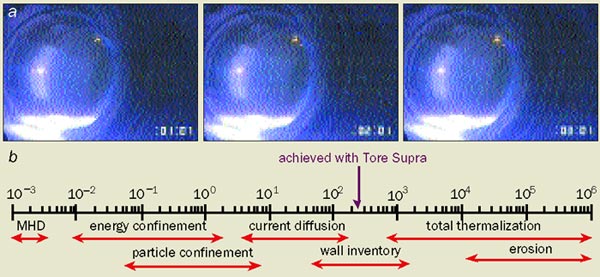
A Computational Breakthrough Moves Fusion Energy Closer to Implementation
A significant advancement from researchers at The University of Texas at Austin could greatly hasten the progress toward viable fusion energy. In a recent publication in Physical Review Letters, a group of scientists revealed an innovative computational technique that addresses a crucial, long-standing obstacle to effectively designing stellarator reactors—fusion systems that were previously hindered by their complex shapes and heavy computational requirements.
For years, the challenge of controlling high-energy particle behavior within intricate, confining magnetic fields has impeded advancements in stellarator fusion. Now, that challenge may have finally found a solution.
Overcoming the Computational Limitations
Fusion energy—the same process that powers the Sun—demands that atomic nuclei be forced together at extremely elevated temperatures. Achieving this on Earth requires scientists to contain plasma, a superheated mixture of charged particles, without direct contact. Magnetic fields are employed to create an unseen “bottle” that secures the plasma in position.
Alpha particles, the result of the fusion process, inject energy back into the system and help maintain the temperature. Conversely, if they escape, they sap the energy necessary for continuous fusion reactions. This containment issue poses a significant challenge for stellarators, whose design features complex, contorted magnetic coils.
Previously, researchers faced a dilemma:
– Employ computationally demanding simulations based on Newton’s laws—providing precise results but requiring extensive processing time, often spanning weeks or more for a single reactor design.
– Utilize quicker yet inaccurate approximations through perturbation theory, which accelerated calculations but risked major errors in estimating particle losses.
“We’re addressing something that’s been an unresolved problem for nearly 70 years,” remarked Josh Burby, assistant professor of physics at UT Austin and the study’s lead author. “It represents a transformative shift in our approach to reactor design.”
The Mathematical Advancement
In collaboration with experts from Los Alamos National Laboratory and Type One Energy Group, the UT Austin team employed data-driven modeling and symmetry theory. They created an innovative computational tool that learns directly from comprehensive particle trajectory data—termed full-orbit simulations—which represent the intricate movement of alpha particles within the magnetic bottle.
This approach transcends the constraints of slow direct simulations and the inaccuracies associated with perturbation theory. For the first time, engineers can produce highly precise predictions of alpha particle behavior in stellarators without compromising cost-effectiveness.
“There is currently no feasible method to obtain a theoretical solution to the alpha-particle confinement dilemma without our findings,” noted Burby. “The direct application of Newton’s laws is prohibitively expensive. Perturbation techniques introduce significant errors. Ours is the first theory that avoids these issues.”
This advancement means that the design cycle for stellarators could be finished up to ten times faster, moving these intricate machines closer to practical energy generation.
Wider Implications Beyond Stellarators
Though the primary emphasis is on stellarator reactors, the innovations from the team may have a wider influence across various fusion technologies. For example, tokamaks—circular magnetic confinement reactors that are the dominant choice in fusion studies—also contend with imperfections in their magnetic fields. These flaws can result in runaway electrons that damage internal components and present operational dangers.
The newly developed computational method could be modified to detect these instabilities more accurately, enhancing the safety and effectiveness of future tokamak experiments.
Accelerating the Journey Toward Clean Fusion Energy
Fusion energy has long been regarded as the “holy grail” of energy generation. It is clean, virtually limitless, and generates no greenhouse gases or enduring radioactive waste—unlike the conventional fission-based nuclear power of today.
Despite years of research, significant engineering and financial challenges have hindered the realization of fusion as a commercial energy source.
This breakthrough addresses one of the most formidable of those challenges. By resolving the issue of magnetic confinement leakage with accuracy and efficiency, the new method removes a major bottleneck in fusion reactor design. This paves the way for quicker innovation and experimentation, potentially transforming years or decades of iterative design into manageable periods.
The research received support from the U.S. Department of Energy and included significant contributions from UT Austin postdoctoral researcher Max Ruth, graduate student Ivan Maldonado, Dan Messenger from Los Alamos National Laboratory, and Leopoldo Carbajal from Type One Energy Group—a company striving to commercialize stellarator-based fusion systems.
Looking Forward
While fusion energy may still encounter substantial challenges—including materials science issues, system integration, and considerable funding—this computational breakthrough signifies a pivotal moment.
As fusion researchers around the globe aim to achieve net energy gain and develop reactors suitable for the grid, the capacity to swiftly and reliably simulate intricate magnetic systems could be vital for the future of fusion power. From the heart of Texas, a once-theoretical obstacle may have just been surmounted.
For those envisioning a world powered by clean, safe, and nearly limitless energy, that future may now be within reach.